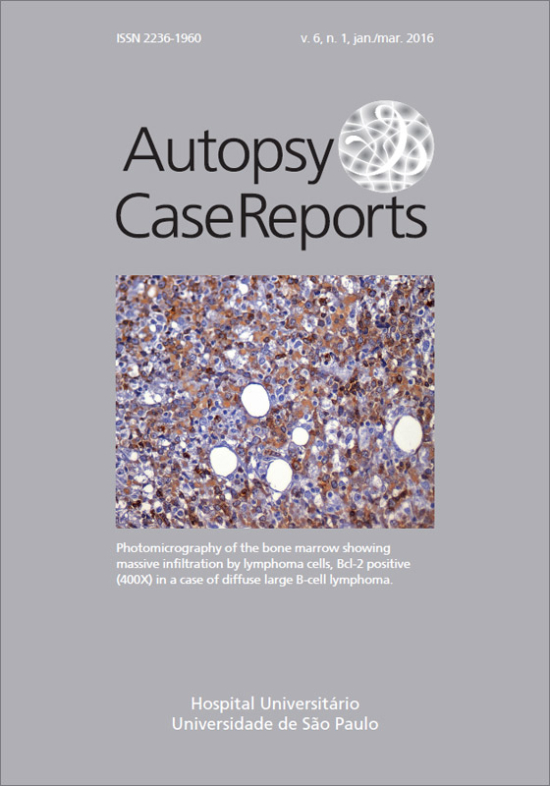Acanthosis Nigricans associated with clear-cell renal cell carcinoma
DOI:
https://doi.org/10.4322/acr.2016.021Keywords:
Acanthosis nigricans, Carcinoma, Renal Cell, Paraneoplastic SyndromesAbstract
Acanthosis nigricans (AN), an entity recognized since the 19th century, is a dermatopathy associated with insulin-resistant conditions, endocrinopathies, drugs, chromosome abnormalities and neoplasia. The latter, also known as malignant AN, is mostly related to abdominal neoplasms. Malignant AN occurs frequently among elderly patients. In these cases, the onset is subtle, and spreading involves the flexural regions of the body, particularly the axillae, palms, soles, and mucosa. Gastric adenocarcinoma is the most frequent associated neoplasia, but many others have been reported. Renal cell carcinoma (RCC), although already reported, is rarely associated with malignant AN. The authors report the case of a woman who was being treated for depression but presented a long-standing and marked weight loss, followed by darkening of the neck and the axillary regions. Physical examination disclosed a tumoral mass in the left flank and symmetrical, pigmented, velvety, verrucous plaques on both axillae, which is classical for AN. The diagnostic work-up disclosed a huge renal mass, which was resected and further diagnosed as a RCC. The post-operative period was uneventful and the skin alteration was evanescent at the first follow-up consultation. The authors call attention to the association of AN with RCCDownloads
Download data is not yet available.
Downloads
Published
2016-03-10
Issue
Section
Article / Clinical Case Report
License
Copyright
Authors of articles published by Autopsy and Case Report retain the copyright of their work without restrictions, licensing it under the Creative Commons Attribution License - CC-BY, which allows articles to be re-used and re-distributed without restriction, as long as the original work is correctly cited.
How to Cite
Campos, F. P. F. de, Narvaez, M. R. A., Reis, P. V. S., Gomes, A. C. M., Paraskevopoulos, D. K. de S., Santana, F., & Fugita, O. E. H. (2016). Acanthosis Nigricans associated with clear-cell renal cell carcinoma. Autopsy and Case Reports, 6(1), 33-40. https://doi.org/10.4322/acr.2016.021



